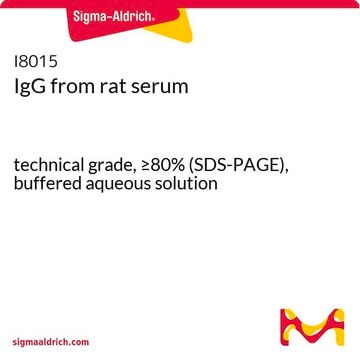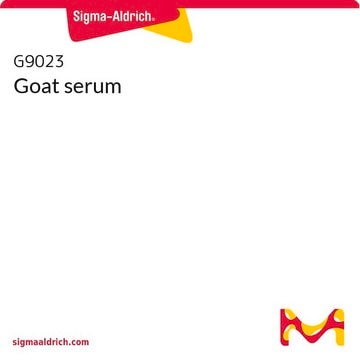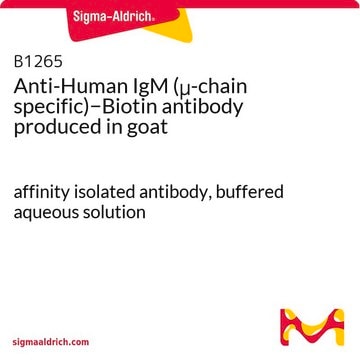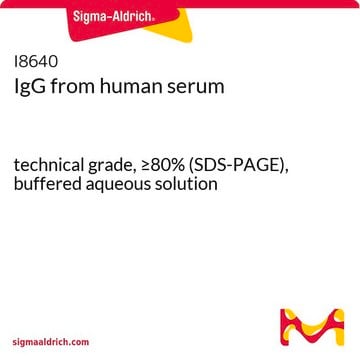I9140
IgG from goat serum
technical grade, ≥80% (SDS-PAGE), buffered aqueous solution
Sinônimo(s):
Goat IgG
Selecione um tamanho
Selecione um tamanho
About This Item
Produtos recomendados
conjugado
unconjugated
grau
technical grade
Ensaio
≥80% (SDS-PAGE)
Formulário
buffered aqueous solution
técnica(s)
ChIP: suitable
immunohistochemistry: suitable
Condições de expedição
dry ice
temperatura de armazenamento
−20°C
Procurando produtos similares? Visita Guia de comparação de produtos
Categorias relacionadas
Descrição geral
Goat IgG is purified from normal goat serum by fractionation.
Aplicação
forma física
Exoneração de responsabilidade
Código de classe de armazenamento
10 - Combustible liquids
Classe de risco de água (WGK)
WGK 3
Ponto de fulgor (°F)
Not applicable
Ponto de fulgor (°C)
Not applicable
Equipamento de proteção individual
Eyeshields, Gloves, multi-purpose combination respirator cartridge (US)
Escolha uma das versões mais recentes:
Certificados de análise (COA)
Não está vendo a versão correta?
Se precisar de uma versão específica, você pode procurar um certificado específico pelo número do lote ou da remessa.
Já possui este produto?
Encontre a documentação dos produtos que você adquiriu recentemente na biblioteca de documentos.
Os clientes também visualizaram
Active Filters
Nossa equipe de cientistas tem experiência em todas as áreas de pesquisa, incluindo Life Sciences, ciência de materiais, síntese química, cromatografia, química analítica e muitas outras.
Entre em contato com a assistência técnica














